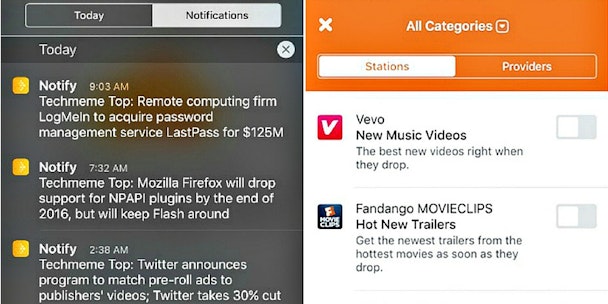Facebook Notify is a win for the social media empire, but is it a loss for professional media brands?
Facebook has announced an extension to its ever-growing ecosystem with Facebook Notify – a new app that will alert users to new stories from professional media brands. This further strengthens Facebook’s insights and advertising walled garden – an environment of apps and tools where Facebook is the conduit to consumer data and consumer access.

Without a doubt, Facebook has created one of the strongest insights and advertising systems in the market to date, particularly on mobile devices. Facebook Notify will simply expand the platform’s reach to new consumers and increase the frequency with which existing consumers interact with the bigger Facebook ecosystem on a daily basis. However, it is unclear if the new system will actually benefit professional (and self-funded) news and media brands, like The Financial Times, GQ, Conde Nast Traveller, Wallpaper, The Economist, etc.
For many years now, people have been preaching the end is near for professional media brands. With each new innovation from social media platforms to tablet devices, someone somewhere envisions the worst-case scenario for professional media brands. However, the brands have continuously adapted as needed for changing consumer behaviour.
This brings me to the question – will Facebook Notify be another lifeline for professional media brands, or a sign that their end is truly near?
News and content creation need consistent investment and with the exception of public-funded or trust-funded publications, most depend heavily on advertising revenue. So when the most popular brands’ headlines are freely distributed on platforms like Facebook Notify, Apple News, Yahoo Digest and Snapchat Discovery, what is the draw to actually buy brand subscriptions anymore?
I for one am wondering why I have subscriptions to so many professional news and media brands such as GQ, Wallpaper and The Economist, if I can get the same information for free on my social media apps. The revenue solution, and lifeline for media brands, will likely be in a long-term plan for increased advertising, especially native, within these new news apps and features.
We are already seeing how Snapchat is using native advertising within its Discover platform, so we can imagine Apple News and Facebook Notify will follow suit in the long run.
In the future, it is likely we will see a split ad revenue model, where the social media platform (e.g. Facebook) and the professional media brand (e.g. GQ) could split advertising profits. However, although a fresh distribution arm for the professional media brands’ content, the model weighs in Facebook’s favour. The media brands will be very reliant on Facebook, who will hold all the cards (and most of the data) when it comes to renegotiating the terms of the revenue split.
Monetisation within the social media landscape happens slowly – unicorn thinking has helped adjust market expectations. However, in time, just as we are becoming accustomed to all our free news and content, the ads will trickle into these spaces, just as the promoted posts trickled into social media platforms years ago.
In the long run, Facebook and professional media brands may be the winners, but will consumers suffer most? There are still questions to be asked about the differences in aggregation versus curation, and the importance of hierarchy of information within a user’s screen. My fear is that in time, worthy news becomes covered up by advertising ‘click bait’ or not covered altogether.
Overall, the big winner here is Facebook; they are forming an ID ecosystem that is device agnostic and advertiser friendly. The Facebook ID used against any person in the larger Facebook universe provides advertisers with deep insights, access and best-practice targeting in or outside the overt Facebook entities.
So when we consider WhatsApp, Messenger, Instagram, Facebook Notify, and Atlas, we start to see a very large ecosystem that is perfect for cross-device, cross-internet targeting - a very powerful data pool for advertisers.
JR Little is global head of innovation at Carat.
